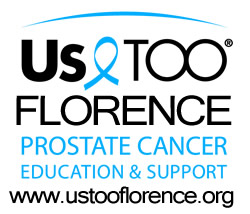|
||||||||
| Home | News You Can Use |
About Us TOO Florence |
Personal Journeys | Slideshows | Contact Us | |||
Events News you can use Treatments |
Us TOO FLORENCE - BEHIND THE HEADLINES BY BOB HORNEY - PROSTATE CANCER SURVIVOR - Us TOO CHAPTER LEADER (Published April 8, 2015, The Siuslaw News) This month I want to talk about surviving prostate cancer - a.k.a. life after diagnosis. Life after prostate cancer diagnosis comes in two forms - non-treatment and treatment. Non-treatment refers to men who are on Active Surveillance (AS) - having been diagnosed with prostate cancer, but not moving directly into active treatment. They know they have prostate cancer, but indications are they have a low-risk stage that is "probably" slow growing. With that knowledge, they are willing to work with their urologist to closely monitor the disease with the intent of living as long as possible before undergoing treatment or avoiding treatment altogether. The rest of that intent is that the careful monitoring will catch it early enough to provide a cure if it changes in any way. Let's fast forward now to those men who were diagnosed with a more aggressive, but still localized, prostate cancer. These would be the men who could likely be cured with surgical or radiation treatment, but have one or more disease characteristics (usually as evidenced from the biopsy results) that eliminate AS as a choice: this could be a Gleason Score higher than 6, a PSA of 10 or greater, too many positive biopsy cores, too much volume of cancer cells in any one of the biopsy cores, etc. Since these men don't qualify for AS, but are still deemed to most likely have localized and curable prostate cancer, the decision boils down to choice of treatment. For the sake of this article, we are going to assume that all went well with the treatment and the PSA responded favorably, i.e. to an undetectable level following surgery; or to a low, stable level following radiation (since they still have a prostate gland and a limited amount of PSA will be produced). Now we have a prostate cancer survivor. One would think this would be "easy street," but now comes the "after treatment-AS" which means follow-up PSA tests to quickly identify and treat a recurrence in case the initial treatment isn't totally successful. What got me thinking about these after-treatment PSA tests was a chance conversation on March 12 in a local grocery store with a man who attended Us TOO Florence meetings, had treatment and is now having a hard time dealing with anxiety while waiting for those post-treatment PSA test results. He feels the anxiety is bad enough to seriously consider stopping the PSA tests. On top of that conversation, on March 13, I read a posting on the Us TOO INSPIRE website titled Stress While Waiting Test Results that dealt with the same concern which is often referred to as "PSA anxiety" or "PSAitis." So, why are these treated men now suffering from this anxiety? The short answer is: We know a rising or elevated PSA from screening can be due to other factors; however, a rising or elevated PSA following prostate cancer treatment is often a worrisome sign that the treatment missed some of the cancer...the first sign of a recurrence. Those of us who attend Us TOO Florence meetings know a recurrence is a very real possibility - many of us have personally experienced it and those who haven't, have seen it happen to others in the group. It isn't unusual for the heart to tick a bit faster as we await the results, but the majority of us will put up with that because we have seen and understand the unforgiving consequences of a recurrence getting a head start and escaping the "window of curability." If we will simply stop and consider the anxiety of cancer patients following treatment of their cancers that have no early warning of a recurrence, we might think that a bit of anxiety for a few days is a small price to pay for a test that may save our life. Just saying... |
| www.ustooflorence.org Copyright © 2010 - 2025 | |

